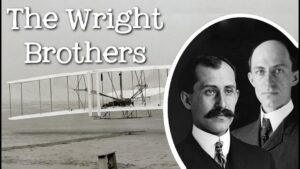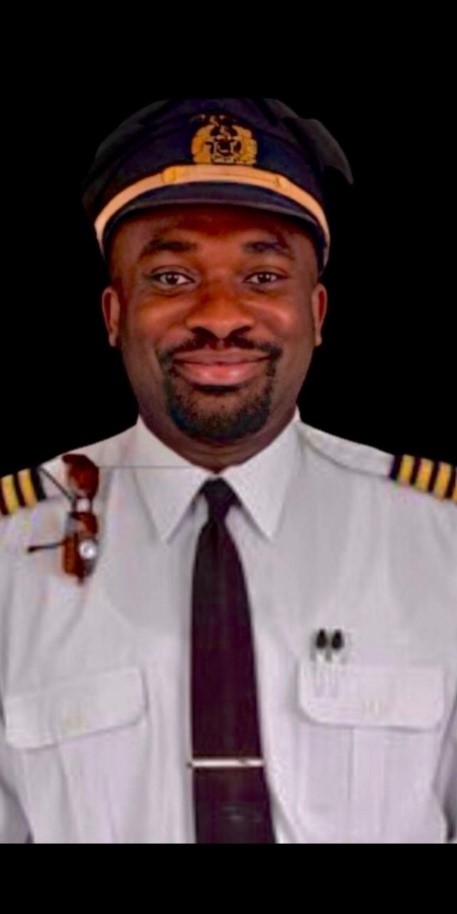As the global aviation industry chalks up 119 years of chequered history, an aviation enthusiast – Capt. Victor Kwesi Amoah, who is an aviation mentor to children and the youth – unmasks activities slated for the industry’s 119th birthday.

Friday 16th December 2022 marks another milestone with the industry’s 119th anniversary. The following interaction with Capt. Amoah highlights global aviation history worthy of acknowledgement and appreciation. What is self-motorised flight, and what’s so special about the birthday? Let’s join an aviation mentor for more insight.
Q: What is the aviation industry’s scope?
A: Aviation came out of the word AVIA, which is bird. In the beginning man saw a bird fly and dared to invent a device that behaves as such. Since then, the industry has been through a lot of chequered evolution. It is this interesting somewhat roller-coaster ride that has led to a safe and meticulous structure which ensures the profitability and comfort we experience today.
To this end, the industry can be divided into sub-divisions – like Aerospace, which deals with the design and building of Air machines. Boeing, Airbus, Embraer and Bombardier are the four leading Aerospace companies adjudged by the industry today.
Air Navigation Services is another sub-division of the industry, and encompasses all the infrastructure needed to house, depart and arrive aircraft safely. Examples are Airport terminal buildings, runways, taxiways, lighting, navigational aids and air-traffic control to mention just a few. All these culminate in the industry’s safety.
Airline business is the transporting of passengers by air from origin to destination for a fee. It is worth noting that KLM pioneered this service in 1919 and British Airways (the then-Imperial Airways) in 1924. General Aviation is the department that provides support to the entire aviation industry with its further sub-divisions such as airline catering, travel agents, aviation training organisations, aviation maintenance and repair organisations, fuel companies to mention a few.
Q: What’s so significant about the Wright Brothers?
A: The Aviation industry is much understood when we first appreciate the pre-17th December 1903 era: the first inventors of flight were using devices that depended on the free air to stay afloat… like gliders and air-balloons. The Wright Brothers, who were bicycle-repairers, were not satisfied with such flights and dared to invent a much more ‘hassle-free’ way to fly.
On 17th December 1903, the Wright Brothers – who were unique among the aviation inventors owing to their self-motorised flight (flight getting airborne and landing under its own power due to the design of its wings and engines) – set the pace with four rounds of experiments in their FLYER 1 aircraft device that sparked global aviation evolution and competition.
The Wright Brothers exploit saw their first airlifted Flyer 1 device crash-land after 12 seconds and 120 feet of air travel. However, their tenacity and resilience emboldened them to pull the device into their hangar for repairs – and to improve upon the design and build flight controls.
Their second attempt at their invention saw improvement with flying distance and time better than the first, but it crash-landed again. That did not deter them: they went back to work on the controls, resulting in an improvement on their third attempt in terms of flight time and distance covered.
It was the fourth and last flight attempt for that day, with a flight time of 59 seconds, which translated into a competition ushering other inventors into the industry. This opened the floodgates of fierce competition in aircraft-design/invention.
All the flight tests of FLYER 1 attracted enthusiastic crowds – and no sooner had the Wright Brothers parked their device in its hangar and headed home for Christmas than news began to go viral of their exploits.
What was to happen from January 1904 that turned the face of aviation is the reason many aviation analysts officially saw 17th December 1903 as the birth-date of aviation. Many aviation enthusiasts began to compete with the Wright Brothers by designing and building aircraft that could outperform FLYER 1 in terms of speed, altitude and time.
Q: Where did Ghana showcase in the Aviation Space?
A: Post-independent Ghana saw the materialisation of President Kwame Nkrumah’s dreams in 1952 (when he was leader of government business in the colonial administration). As of then, he provided scholarships to train pilots, engineers, operations officers, flight attendants and Air navigators to study abroad, train on the job under the British, Russians and gain experience to somewhat “be on their own” in their various departments prior to the birth of Ghana Airways in 1958.
Pioneer pilots such as Captain Thomas Agyare, Capt. Peter Dorkenoo, Capt. Alec Sam, and Capt. Kofi Ampomah were notable among the pioneer pilots. Mr. Essilfie of flight operations, late Mrs. Anorkor Quaye (the pioneer flight attendant) and so many others were among those who benefitted from the scholarship.
Ghana Airways was in existence for 47 years, and during that time had been a beacon of hope to the air transport industry and Ghanaian economy by extension. This writer was also an employee for close to a decade.
The same can be said for the Ghana Air Force, where 16 cadet pilots were taken abroad for training. In the mid-1960s for instance, the Air force Flight Training School in Takoradi was manned by Ghanaians – and some of the selected pilot cadets did their entire basic pilot training there, trained by Ghanaian instructors such as Squadron Leader Kwesi Forson and Kofi Abakah Jackson.
Q: As an Aviation mentor, how have you been celebrating the Wright Brothers and global aviation industry?
A: I have been in the mentorship space offering career presentations in schools and aviation career seminars since July 2001. On 28th July 2012, I also birthed and nursed the idea of setting up various aviation clubs – all in a bid to showcase aviation. On 17th December 2014, when celebrating global aviation’s 111th anniversary at the Aviation Social Centre, I had the opportunity of inviting the Ghana aviation pioneers to receive awards for their meritorious service. It was really a sight to behold.
In December 2015, I organised an aviation history competition for my various clubs in Accra and Tema. Ewurakua Biney won and was sponsored by Ethiopian Airlines to North Carolina to tour the Wright Brothers’ museum. Her trip was put on hold for certain reasons, and plans are afoot for her to be enlisted in the winners of our aviation 120 (milestone celebration) quiz competition.
In summary, I dare say I am one of the global thought-leaders as far as celebrating the Wright Brothers’ event; because apart from celebrating them through clubs and events, I always do a write-up (newsprinit) on the Brothers and aviation history.
Q: You made mention of the Aviation 120 Milestone celebration; how do you intend to celebrate it?
A: The Aviation 120 Milestone celebration begins from the interaction we are having now, because we are celebrating aviation’s 119th birthday as part of public sensitisation for new readers and those who wish to make themselves abreast with the industry’s scope.
We are also having an event to collaborate with respective stakeholders to create clubs which are going to celebrate the Wright Brothers aviation history. These would showcase through club events such as history competition that would lead to national award by the time aviation will be 120 years.
In each club we have specific aviation activities that will lead through 2023 to December when the industry is 120 years, and as part of the celebration award those who won the club activities. There is so much I dream of, and I wish to celebrate the milestone because so much has happened from 17th December 1903 to date when the aviation industry is mentioned. We will keep collaborating with stakeholders to push the agenda forward in celebrating the Wright Brothers and the ‘Aero Daredevils’.
Q: Do you have any parting message for your cherished readers and listeners?
A: Yes I do…in sensitising people about the industry there is one thing we should know – that the aviation industry is a multi-dollar training industry; because there is no suitable alternative for travelling that competes with air and employs so many people. More so, its activities start with so many sectors of the economy whether we like it or not. It goes a long way to cushion industries such as Agriculture, transport and others.
As a multi-dollar industry, parents and guardians should encourage their wards to nurse an interest in the industry and try to build careers for themselves. Schools, government and other institutions should collaborate with relevant stakeholders who are trying to bring the industry into the limelight. The public should endeavour to consult the right people in the industry for information. Let us all put our hands on deck to push the aviation industry forward. I must say the industry is still the safest mode of travel. I thank all stakeholders who have been part of the industry.
>>>the writer is an airline pilot and aviation mentor to kids, teens and youth










